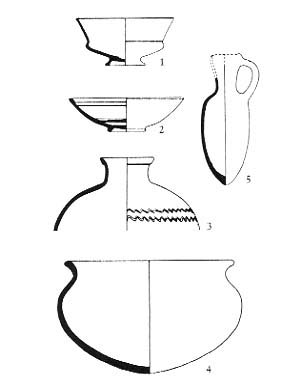Image Details

Kenyon, Jericho 4 (1): Jericho 5 (2–5)
Inexplicably, Kenyon ignored these examples of common, locally made domestic pottery at Jericho and instead based her Middle Bronze Age date for City IV on the absence of expensive imported Cypriote ware known to date to the beginning of the Late Bronze Age. She reasoned that the absence of these Late Bronze forms indicated the city must have been destroyed at the end of the Middle Bronze Age. However, such Late Bronze Age imports are typically found in tombs in large cities on major trade routes. The Jericho of City IV, in Kenyon’s own words was “something of a backwater.” She should not have been surprised by the absence of Cypriote imports in Late Bronze Jericho. She should have paid greater attention to the locally made household pottery she did find, especially because she was dependent on a very limited excavation area in a poor section of the city—the last place to look for exotic imported materials.
